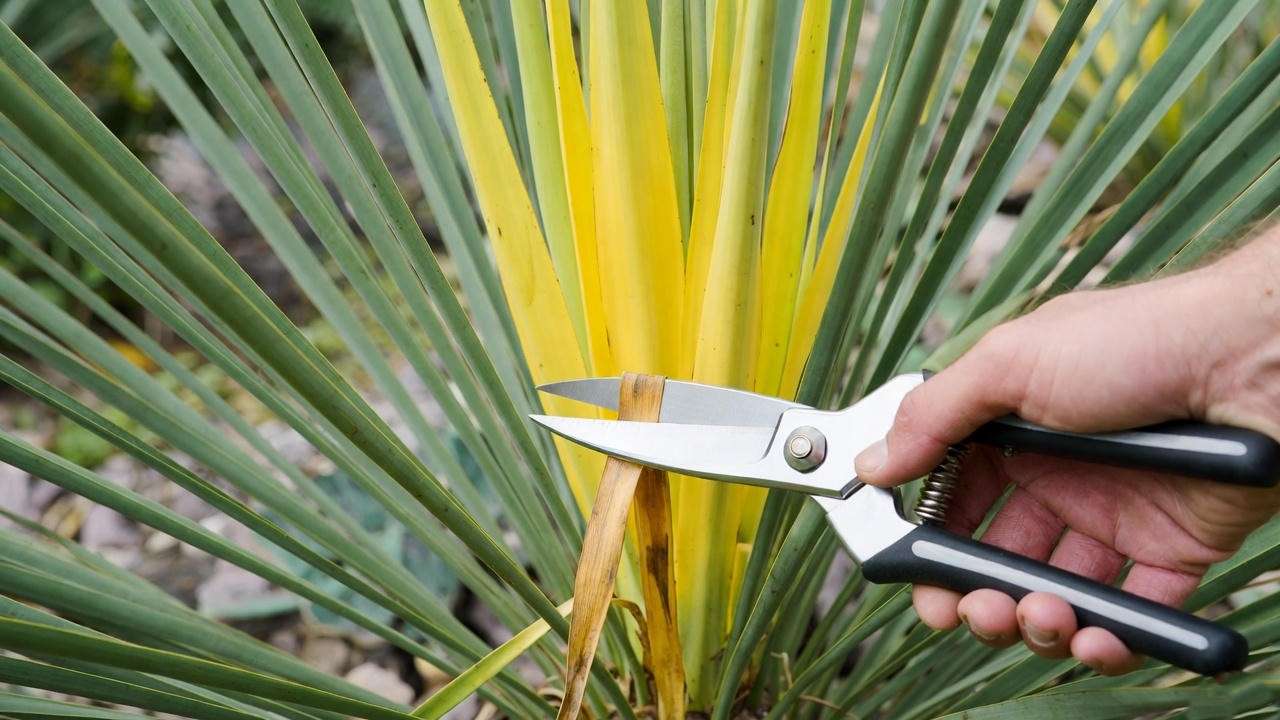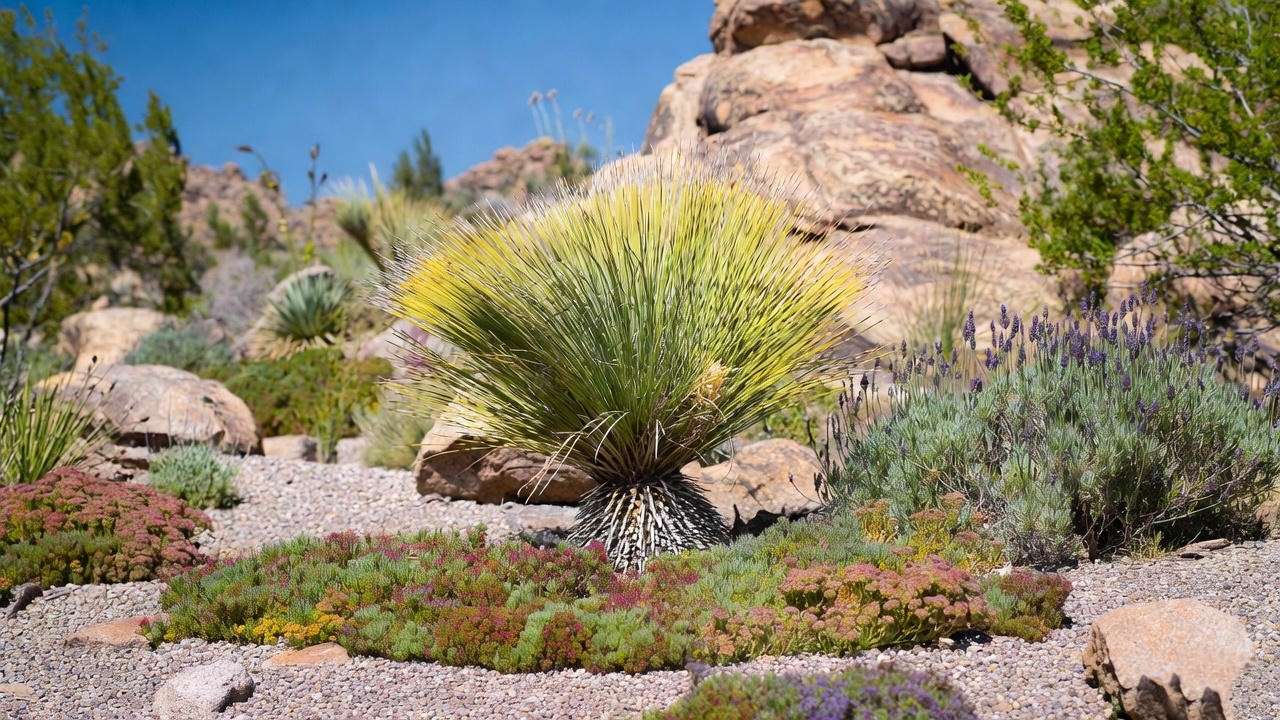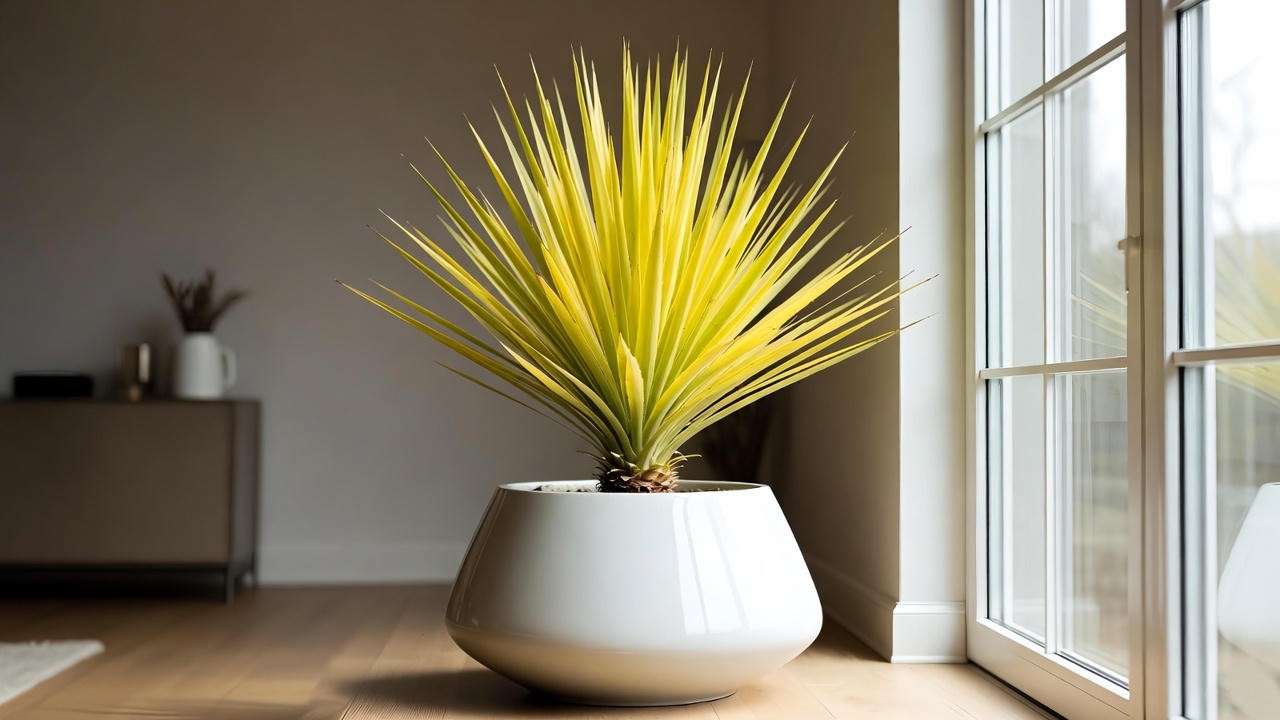Imagine a plant that transforms your garden into a desert oasis or adds a bold, architectural flair to your living room — all while asking for minimal care. Meet the yellow yucca plant, a stunning, low-maintenance beauty known for its vibrant yellow-green foliage and drought-tolerant nature. Whether you’re a novice gardener or a seasoned plant enthusiast, mastering yellow yucca plant care can elevate your space and simplify your routine. As a horticulturist with over a decade of experience specializing in desert flora, I’ve cultivated countless yuccas and shared insights with plant communities worldwide. In this guide, you’ll discover seven expert tips to ensure your yellow yucca thrives, addressing common challenges like yellowing leaves or improper watering. Let’s dive in and unlock the secrets to keeping your desert beauty radiant!
What Is a Yellow Yucca Plant? 🌼
Overview of the Yellow Yucca Plant
The yellow yucca plant, often a cultivar of Yucca filamentosa or related species, is a striking perennial known for its sword-shaped leaves and vibrant yellow or yellow-green variegation. Native to arid regions of North America, this desert gem thrives in harsh conditions, making it a favorite for xeriscaping and low-maintenance landscapes. Its rosette growth pattern and occasional towering flower spikes add dramatic flair to gardens or indoor spaces. Yellow yuccas are celebrated for their resilience, surviving droughts, poor soils, and temperature extremes with ease.

Varieties of Yellow Yucca
Popular yellow yucca cultivars include ‘Color Guard,’ with creamy yellow stripes, and ‘Golden Sword,’ boasting bold golden hues. These varieties differ in size (Color Guard reaches 2–3 feet, while ‘Golden Sword’ may grow taller) and intensity of yellow coloration. Compared to green yuccas like Yucca gloriosa, yellow varieties offer brighter aesthetics but similar care needs. Choosing the right cultivar depends on your space and design goals — smaller varieties suit containers, while larger ones shine in open gardens.
Why Choose a Yellow Yucca?
Yellow yuccas are a gardener’s dream: they require minimal water, resist pests, and adapt to both indoor and outdoor settings. Their vivid foliage complements modern, minimalist, or desert-inspired aesthetics. For example, a client of mine transformed her barren backyard into a vibrant rock garden using ‘Color Guard’ yuccas as focal points. Beyond beauty, they’re low-effort plants that thrive on neglect, perfect for busy plant lovers.
Understanding the Needs of Your Yellow Yucca Plant 🌱
Light Requirements
Yellow yuccas crave sunlight to maintain their vivid coloration. Aim for at least six hours of direct sun daily — think south-facing garden beds or sunny windowsills. Indoors, place your yucca near a bright, unobstructed window or supplement with full-spectrum grow lights (12–14 hours daily). Insufficient light leads to leggy growth or faded yellow hues. I once helped a friend revive a dull yucca by relocating it to a sunnier patio, where it regained its vibrancy within weeks.

Soil Preferences
Well-draining soil is non-negotiable for yellow yuccas. Opt for sandy, rocky, or gravelly mixes with a pH of 5.5–7.5. Heavy, clay-rich soils trap moisture, risking root rot — a common yucca killer. For potted yuccas, use a commercial cactus/succulent mix or create your own by blending potting soil, sand, and perlite (2:1:1 ratio). In gardens, amend clay soils with gravel or raised beds to improve drainage.
Watering Needs
Yellow yuccas are drought-tolerant but need strategic watering. Water deeply every 2–3 weeks in summer, allowing soil to dry completely between sessions. In winter, reduce to once monthly or less, especially in cooler climates. Overwatering causes soggy roots and yellowing leaves, while underwatering may lead to wilting. For humid regions, err on the side of less water. A moisture meter can help beginners avoid guesswork.
Temperature and Climate
Yellow yuccas thrive in temperatures between 60–85°F but tolerate extremes, from scorching summers to light frosts (USDA zones 4–11 for most varieties). Protect outdoor yuccas in harsh winters with mulch or burlap wraps. For indoor plants, avoid drafty windows or heat vents. In my Arizona garden, yuccas weathered 100°F+ summers with minimal care, proving their adaptability.
7 Expert Tips for Yellow Yucca Plant Care 🌟
Tip 1: Perfect Your Watering Technique
Watering is where most yucca owners stumble. To master it, water deeply until moisture reaches the roots, then wait until the soil is bone-dry before watering again. For outdoor yuccas, a soaker hose ensures even distribution. Indoors, use a pot with drainage holes and empty saucers promptly. A gardener I advised in Texas saved her overwatered yucca by adopting this method, cutting back to biweekly watering. Use a moisture meter for precision, especially in humid climates.
Tip 2: Optimize Sunlight Exposure
Maximize sunlight to keep your yucca’s yellow foliage vibrant. Outdoors, plant in open areas free from shade. Indoors, rotate pots quarterly to ensure even light exposure. If natural light is limited, install a 6500K grow light 12–18 inches above the plant. A checklist: Is your yucca getting 6+ hours of direct sun? Are leaves fading or stretching? I’ve seen yuccas transform from lackluster to luminous simply by moving them to brighter spots.
Tip 3: Prune for Health and Aesthetics
Pruning keeps yuccas tidy and healthy. In spring, remove dead or damaged leaves at the base using clean, sharp shears. Cut spent flower stalks to redirect energy to foliage. Avoid over-pruning healthy leaves, as they store nutrients. A diagram (to be included) will show proper cuts. One of my clients revitalized a scraggly yucca by pruning strategically, enhancing its shape and vigor within months.

Tip 4: Fertilize Sparingly
Yellow yuccas need minimal feeding. Apply a balanced, low-nitrogen fertilizer (e.g., 10-10-10) once in spring, diluted to half strength. Over-fertilizing causes root burn or excessive, weak growth. Organic options like compost tea work well for eco-conscious gardeners. I recommend skipping fertilizer in the first year for newly planted yuccas to let them establish naturally.
Tip 5: Prevent and Treat Pests
Yellow yuccas are naturally pest-resistant, but scale insects and spider mites can occasionally strike, especially indoors. Look for sticky residue, tiny webs, or discolored leaves. Treat infestations promptly with neem oil or insecticidal soap, applied weekly until pests are gone. For prevention, maintain good air circulation and avoid overwatering. A colleague of mine once saved a client’s indoor yucca from spider mites by misting it with a neem solution and increasing ventilation, restoring its health in weeks. Regular inspections catch issues early.
Tip 6: Repot or Transplant with Care
Repot indoor yuccas every 2–3 years to refresh soil and accommodate growth. Choose a pot 2 inches wider than the current one, with drainage holes. Use a cactus mix and handle roots gently to avoid shock. For outdoor transplants, spring is ideal—dig a wide hole, preserve the root ball, and water sparingly post-move. Below is a quick guide for pot sizes:
| Yucca Size | Pot Diameter |
| Small (1–2 ft) | 10–12 inches |
| Medium (2–3 ft) | 14–16 inches |
| Large (3+ ft) | 18–20 inches |
A client successfully transplanted a ‘Golden Sword’ yucca to her garden by following this method, ensuring minimal stress.
Tip 7: Winterize Your Yellow Yucca
In cold climates (zones 4–6), protect outdoor yuccas from frost by adding a 2–3 inch layer of mulch around the base. For severe winters, wrap plants in burlap or move potted yuccas indoors. Reduce watering to once every 4–6 weeks, as yuccas enter dormancy. Indoors, place yuccas in bright, cool spots (50–60°F) to mimic winter conditions. In my experience, a well-winterized yucca in Colorado thrived through subzero temperatures with these precautions.
Common Mistakes to Avoid with Yellow Yucca Plants 🚫
Overwatering Woes
Overwatering is the leading cause of yellow yucca failure. Excess moisture leads to root rot, marked by mushy roots and yellowing, drooping leaves. To diagnose, check soil dampness and inspect roots for black or soft spots. If caught early, repot in dry, well-draining soil and withhold water for two weeks. A gardener I mentored saved her yucca by correcting this mistake, proving recovery is possible with quick action.
Incorrect Soil Choices
Heavy, clay-rich soils spell disaster for yuccas, trapping water and suffocating roots. Always use well-draining mixes, whether in pots or gardens. If your garden soil is clay-heavy, create raised beds or mix in sand and gravel. For potted yuccas, avoid standard potting soil without amendments. I’ve seen yuccas rebound after switching to proper soil, regaining vigor within a season.
Neglecting Pruning and Maintenance
Unpruned yuccas can become leggy, harbor pests, or look unkempt. Regular maintenance—removing dead leaves and spent stalks—keeps plants healthy and attractive. A before-and-after case I encountered involved a neglected yucca that transformed into a garden centerpiece after consistent pruning and care. Schedule maintenance in spring for best results.
Yellow Yucca in Your Garden or Home: Design Ideas 🏡
Outdoor Landscaping with Yellow Yucca
Yellow yuccas shine in desert-inspired landscapes. Pair them with companions like agave, lavender, or ornamental grasses for texture and color contrast. Use them as focal points in rock gardens, along borders, or in xeriscape designs. For example, a ‘Color Guard’ yucca can anchor a gravel bed, surrounded by low-growing sedums. A photo gallery (to be sourced) will showcase layouts, inspiring readers to experiment. Their bold form elevates any outdoor space.

Indoor Styling Tips
Indoors, yellow yuccas add drama to modern, minimalist, or boho decor. Place them in sleek ceramic pots for a contemporary look or woven baskets for rustic charm. Position near snake plants or ZZ plants for a cohesive green display. Yuccas also purify air and are non-toxic to pets, making them family-friendly. A client styled her living room with a ‘Golden Sword’ yucca, creating a vibrant focal point that drew compliments.

Frequently Asked Questions (FAQs) ❓
Q1: Why are my yellow yucca leaves turning brown?
Brown leaves often signal overwatering, poor drainage, or sunburn. Check soil moisture and ensure proper drainage. If newly planted, leaves may brown from transplant shock—trim affected areas and maintain consistent care.
Q2: Can yellow yucca grow indoors year-round?
Yes, with ample sunlight (6+ hours) and well-draining soil. Use grow lights in low-light homes and avoid overwatering. Indoor yuccas thrive with proper conditions.
Q3: How often should I fertilize my yellow yucca?
Fertilize once in spring with a diluted, balanced fertilizer (10-10-10). Avoid frequent feeding to prevent root burn. Organic options like compost tea are effective.
Q4: Is yellow yucca safe for pets?
Yes, yellow yuccas are non-toxic to cats and dogs. However, their sharp leaves can cause minor injury, so place them out of reach of curious pets.
Q5: How do I propagate yellow yucca?
Propagate via offsets (pups) in spring. Carefully separate from the parent plant, ensuring roots are intact, and plant in well-draining soil. Water sparingly until established.
Conclusion: Grow Your Yellow Yucca with Confidence 🌴
With these seven expert tips, you’re equipped to keep your yellow yucca plant thriving, whether it’s brightening your garden or elevating your indoor space. From perfecting your watering routine to winterizing with care, these strategies address common challenges and ensure long-term success. As a horticulturist, I’ve seen countless yuccas flourish under these practices, and I’m confident you’ll see the same results. Share your yucca journey in the comments, subscribe for more plant care guides . For further reading, explore our articles on xeriscaping or indoor plant care. Let’s grow your desert beauty together!













